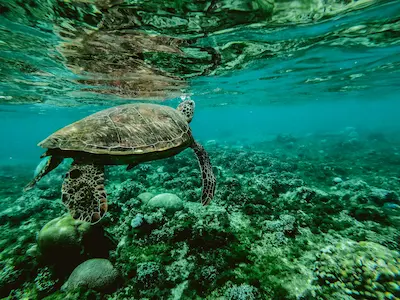
Our oceans, the lifeblood of this planet, are in a state of crisis. Human activities like climate change, pollution, overfishing, and habitat destruction are causing widespread devastation to marine ecosystems and catastrophic declines in biodiversity. This ecological imbalance represents one of the gravest existential threats we face as a global community.
The statistics are overwhelming and incontrovertible proof of the dire situation. According to a 2019 UN report, a staggering nearly 1 million plant and animal species are at risk of extinction, with marine life particularly imperiled. A landmark study published in the prestigious journal Science in 2015 revealed that over just the past four decades, the world’s oceans have hemorrhaged a 49% reduction in biodiversity.
The myriad drivers of this crisis are inextricably linked to human activities and failings. Greenhouse gas emissions causing climate change are warming the oceans, leading to mass die-offs of vital coral reefs which nurture 25% of all marine species. Already, a sobering 50% of all coral reefs have been lost, with annual severe bleaching events only increasing due to accelerating temperature rise.
But the devastation extends far beyond just coral reefs. Our inland waters are also suffering immensely. A 2018 study in the Proceedings of the National Academy of Sciences laid bare that human activities have driven an 83% collapse in freshwater species populations on average. For migratory freshwater fish species, the plummet is a scarcely comprehensible 97% decline.
Our society’s ravenous appetite for seafood is also pushing marine life to the brink through rampant overfishing and poor resource management. The United Nations Food and Agriculture Organization estimates a full 35% of the world’s fisheries are currently overexploited with no concrete plans for recovery. Marine biologists warn that if current fishing rates continue unabated, we could witness a complete collapse of all fished species by as early as 2048 – just over two decades from now.
Plastic pollution, too, is a critical factor endangering marine biodiversity. Conservative estimates suggest at least 8 million metric tons of plastic waste enters our oceans from land-based sources each year. A 2015 study identified that over 700 different marine species across the world have encountered plastic pollution, which causes malnutrition, intestinal injury, starvation, and death from ingestion or entanglement.
The economic and social consequences of this biodiversity collapse cannot be overstated. A 2012 study by ecologists estimated the potential loss of vital biosphere services like marine fisheries, wild pollinators, forests, and natural coastal protection may cost a staggering $6.3 trillion to $31.8 trillion annually by the year 2052, if we remain on the current path.
Solving this multi-dimensional crisis requires an immediate and unprecedented globally-coordinated effort at protecting habitats, implementing sustainable fishing practices, dramatically slashing carbon emissions, reducing plastic and chemical pollution, and investing in conservation and biodiversity protection. The World Wildlife Fund calculated that between $598 billion to $824 billion annually is needed to bend the curve and reverse further biodiversity decline by 2030.
The alternative is a future of guaranteed ecological devastation, economic turmoil, and severe threats to food and water security on a global scale. The scientific evidence is unequivocal – 93% of the excess heat trapped by human-caused greenhouse gases is absorbed by the oceans, causing acidification, oxygen depletion, marine heatwaves, and toxic algal blooms. Irreparable damage has already been done, with over 80% of the world’s coastal ocean areas experiencing pollution, and just 13% of the global ocean remaining undamaged by human activity, according to a 2008 study.
In a 2020 joint statement, an international team of leading biologists starkly warned that the ghastly future of mass extinction, declining biodiversity, climate disruptions…depleted resources, and conflicts and increased human misery… is already being glimpsed. We must take transformative, coordinated global action now to protect the biodiversity that sustains all life on Earth, for the good of current and future generations. Anything less is an unforgivable injustice that our children and their children’s children will have to pay for. The risks are existential and catastrophic – but we still have a window to course correct. We cannot afford any further delay.


 Raj Mehta – Financial Education Instructor
Raj Mehta – Financial Education Instructor